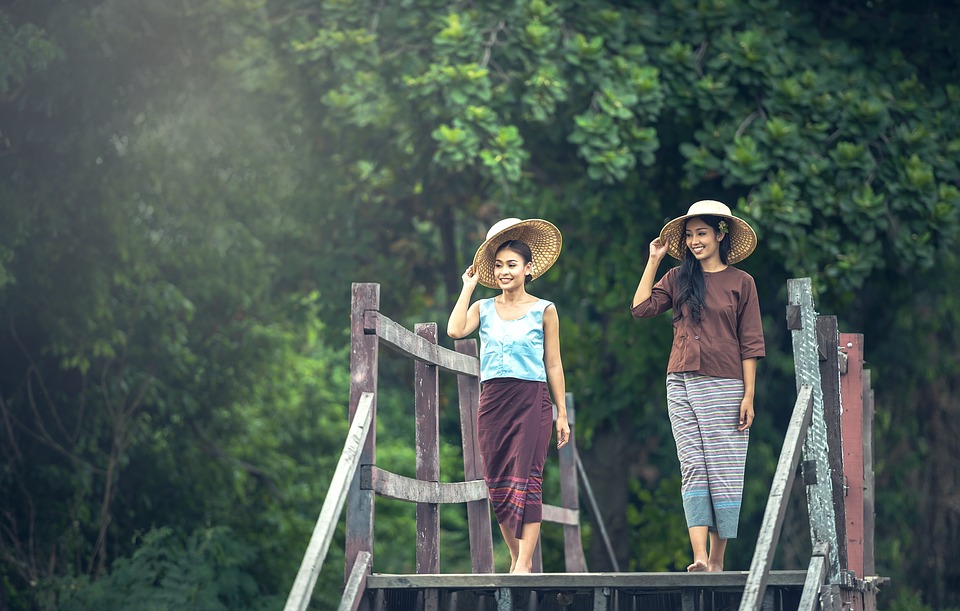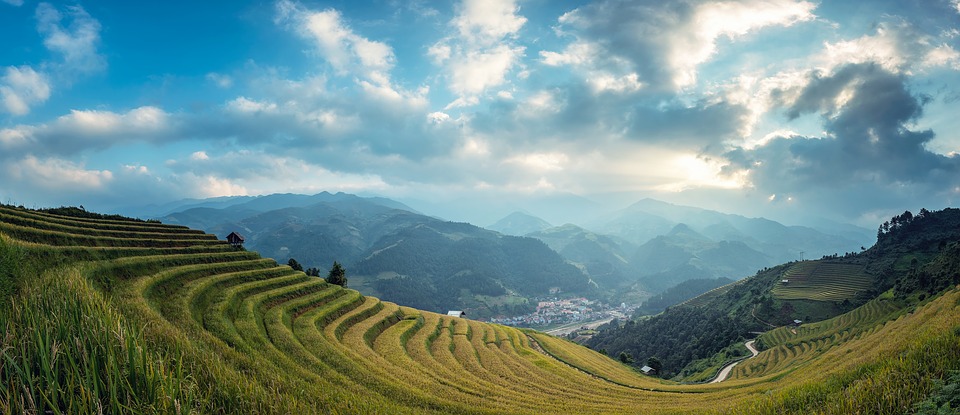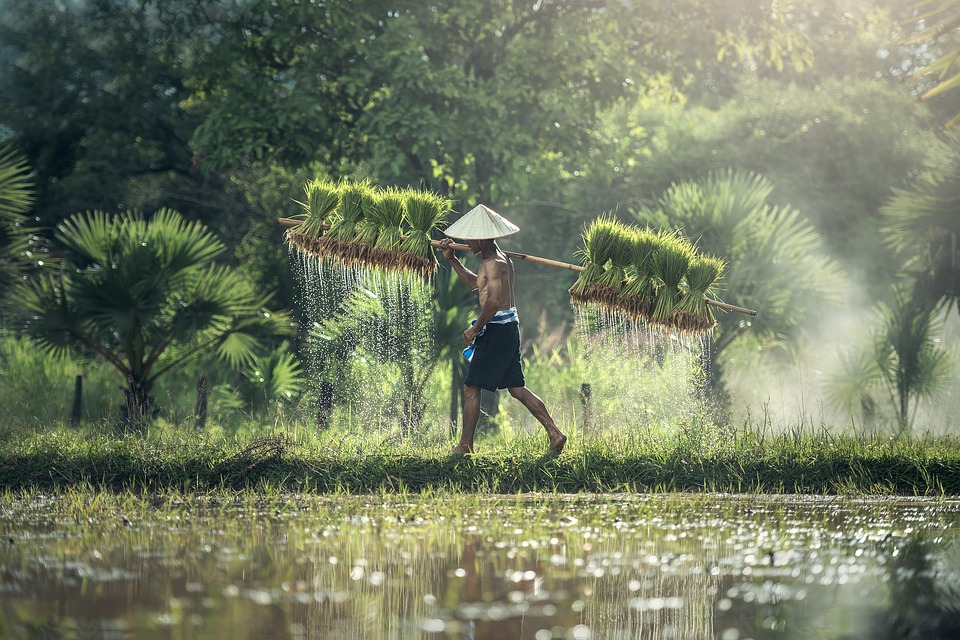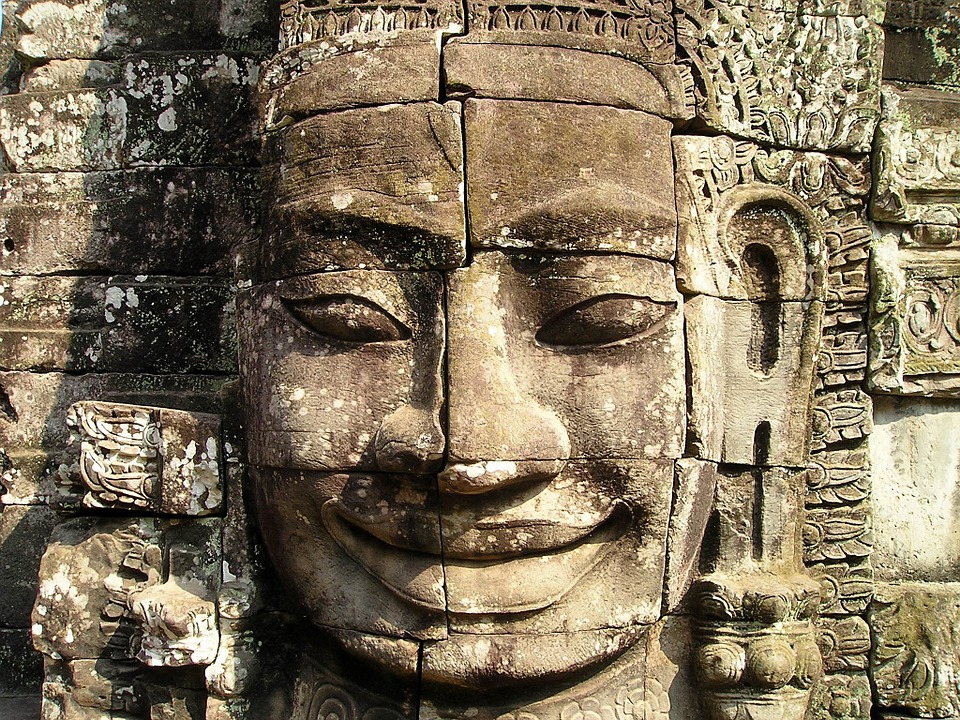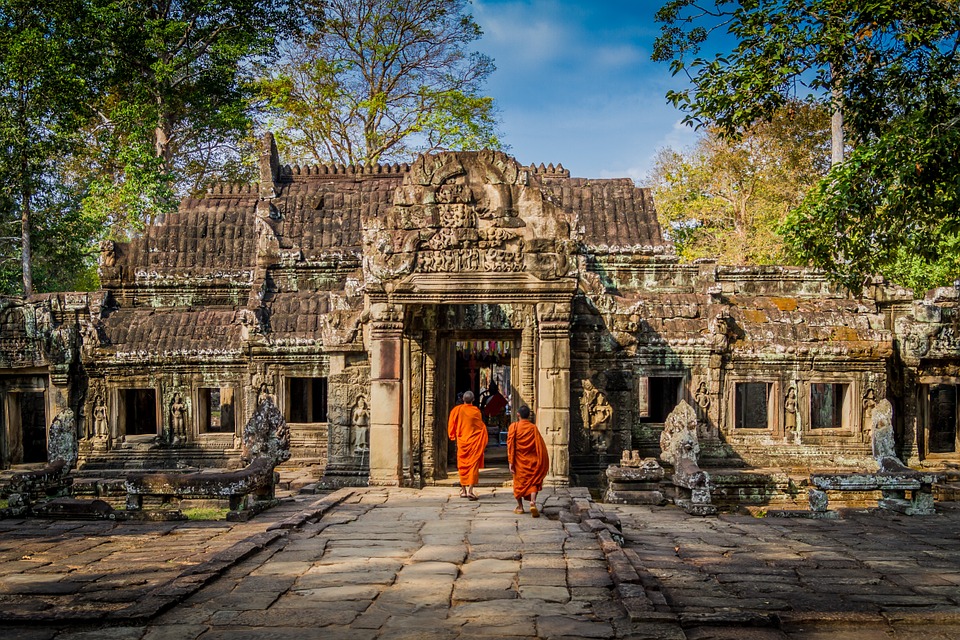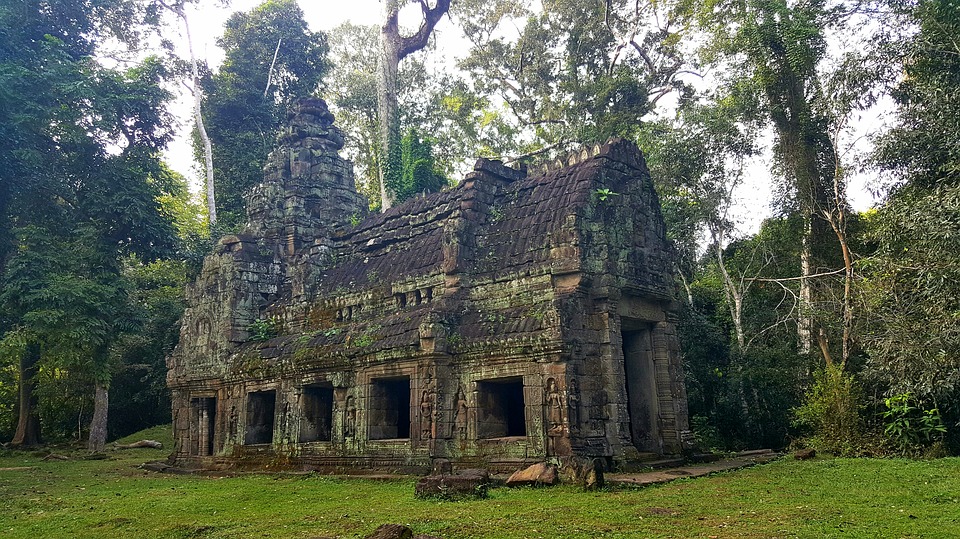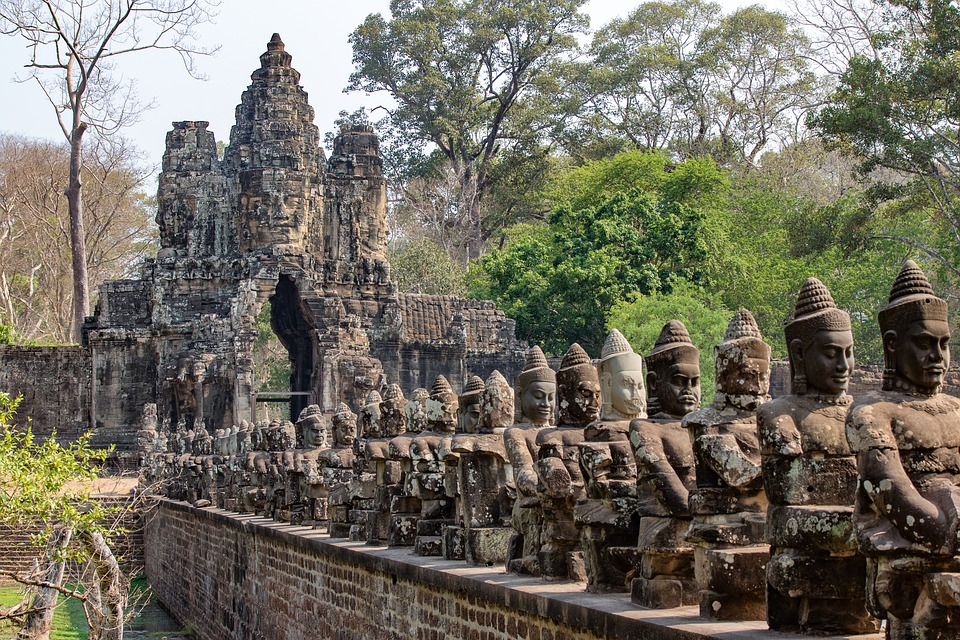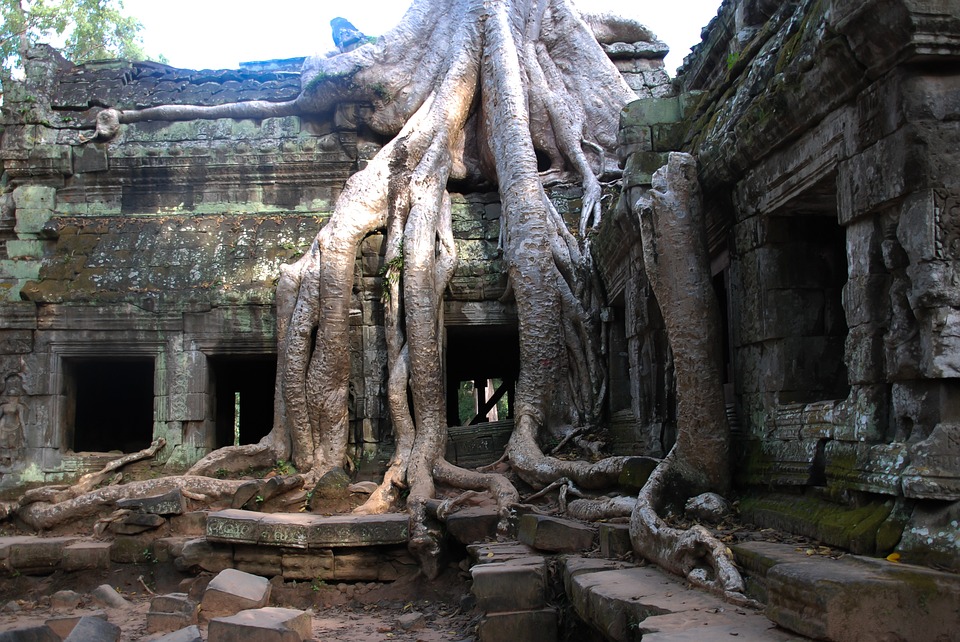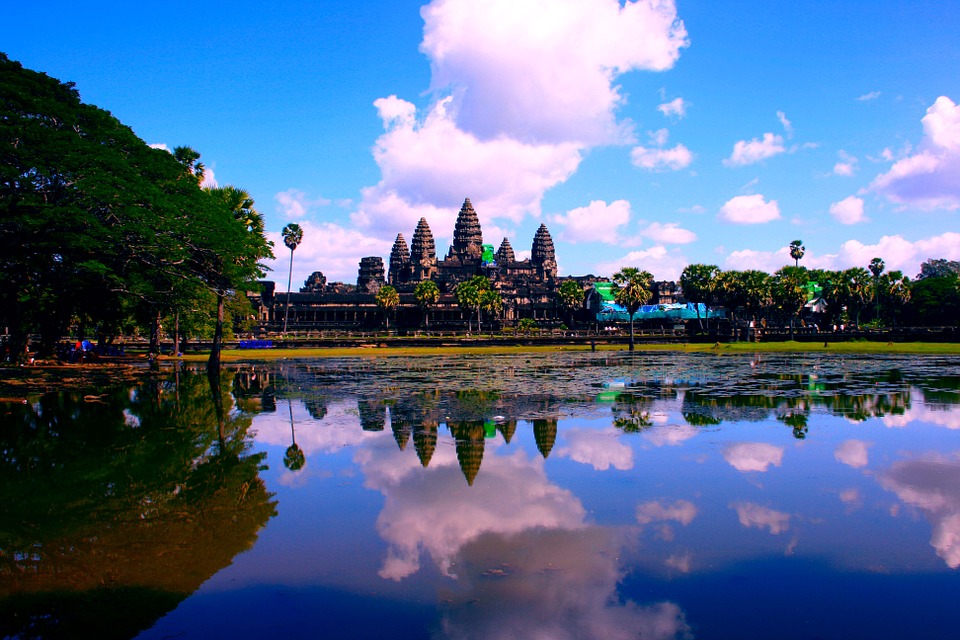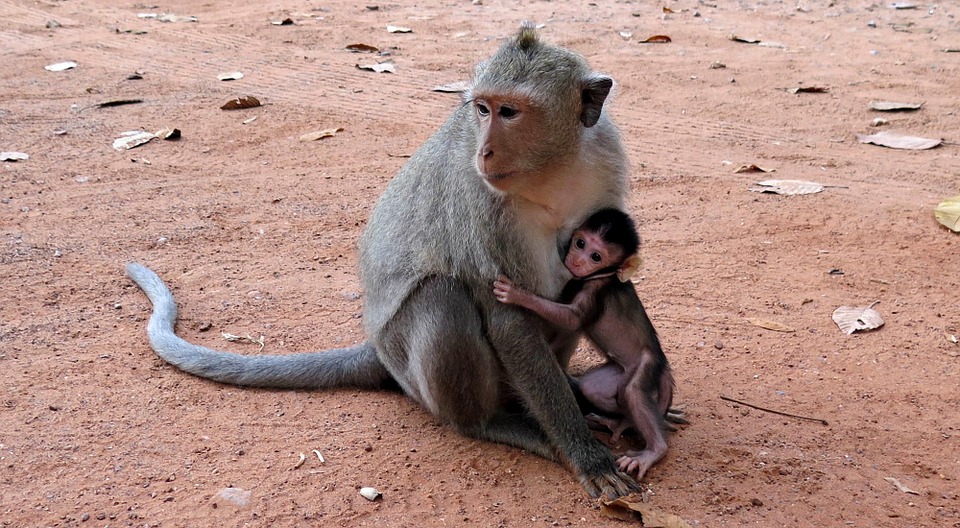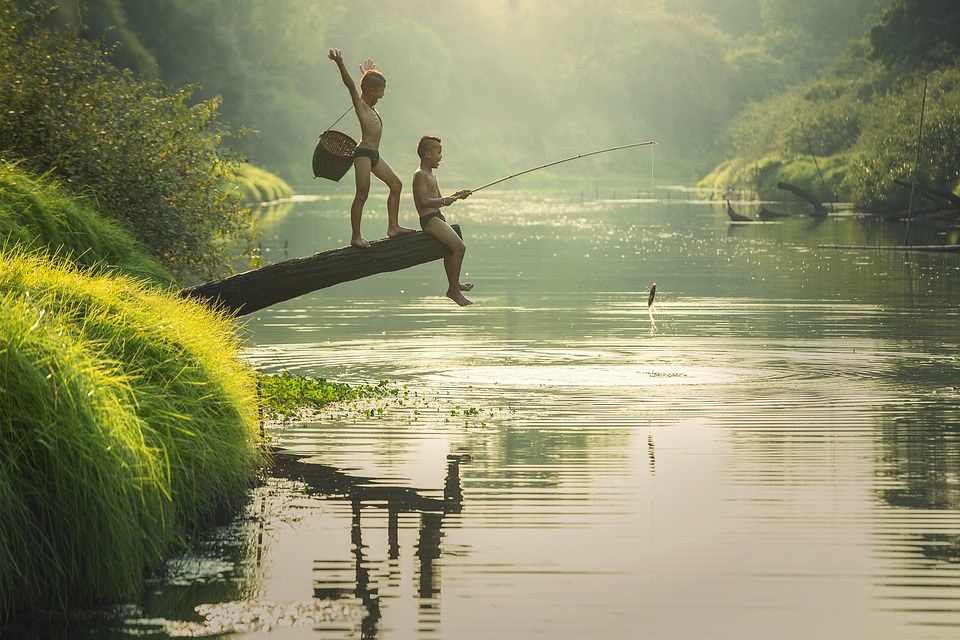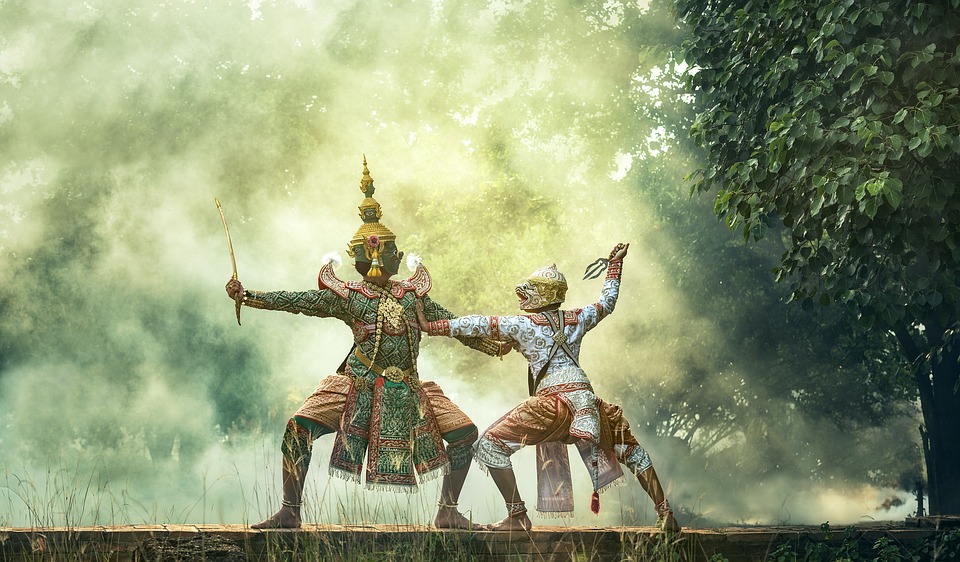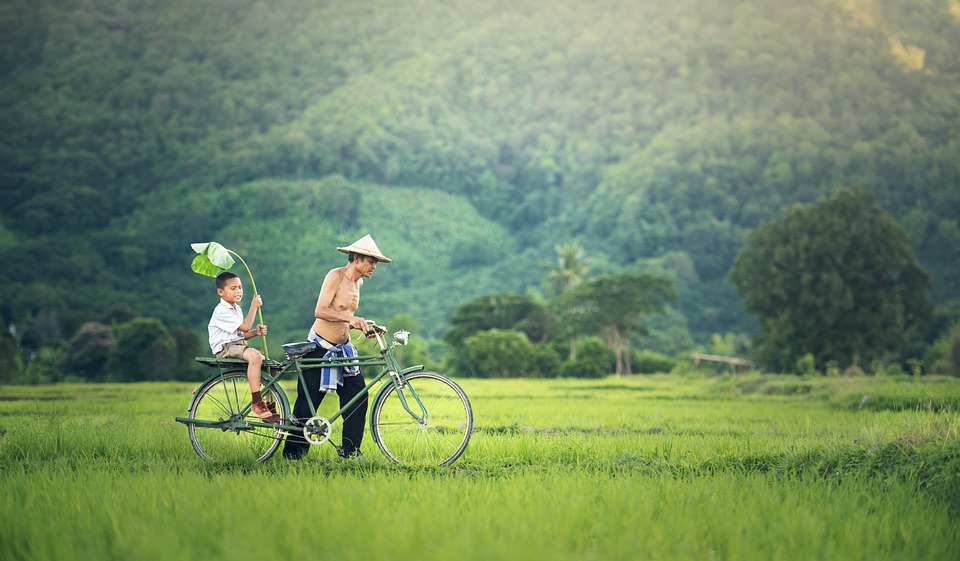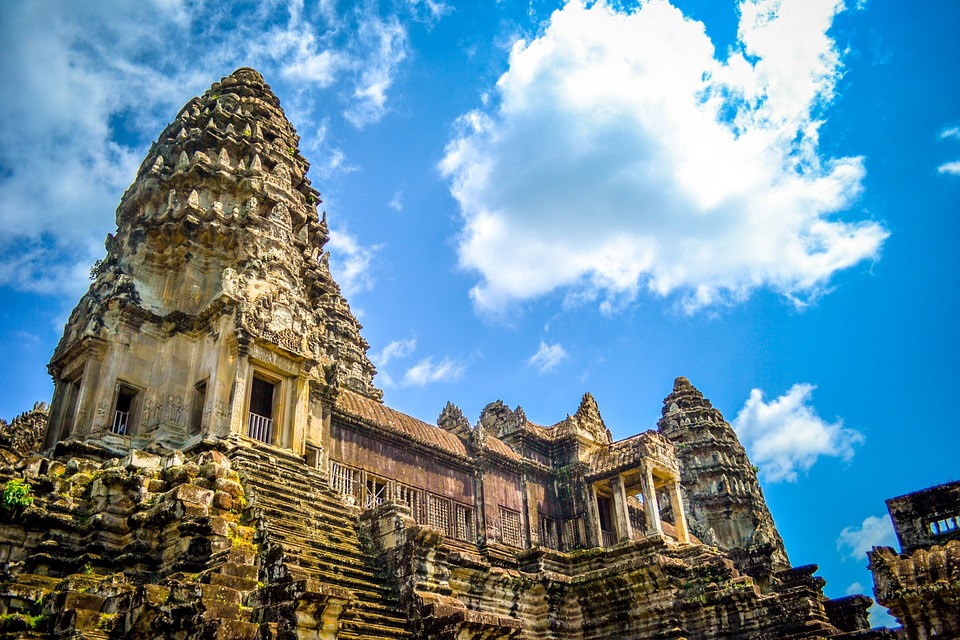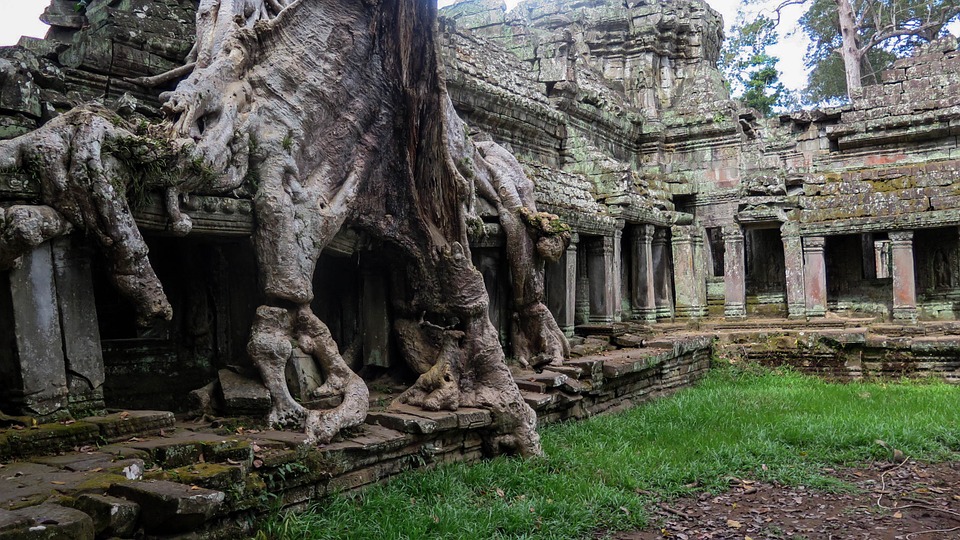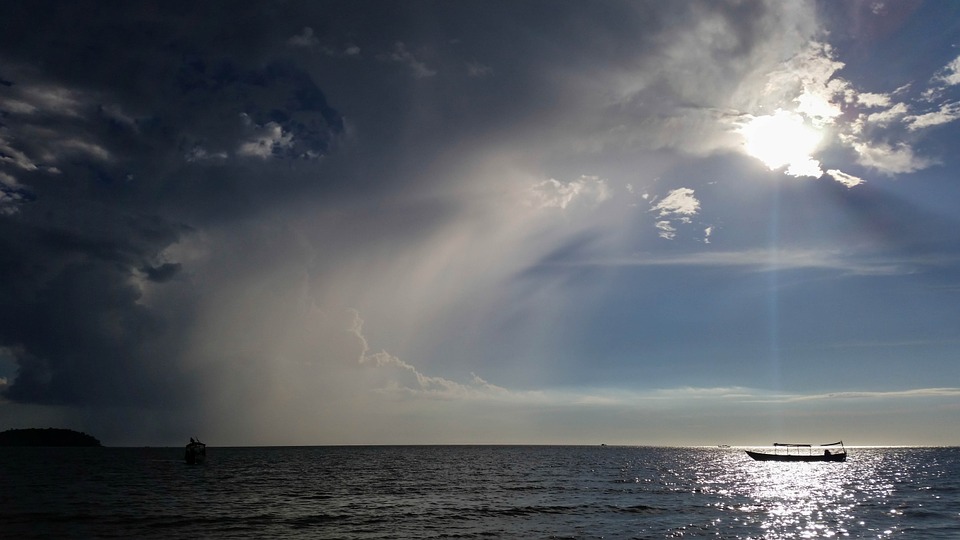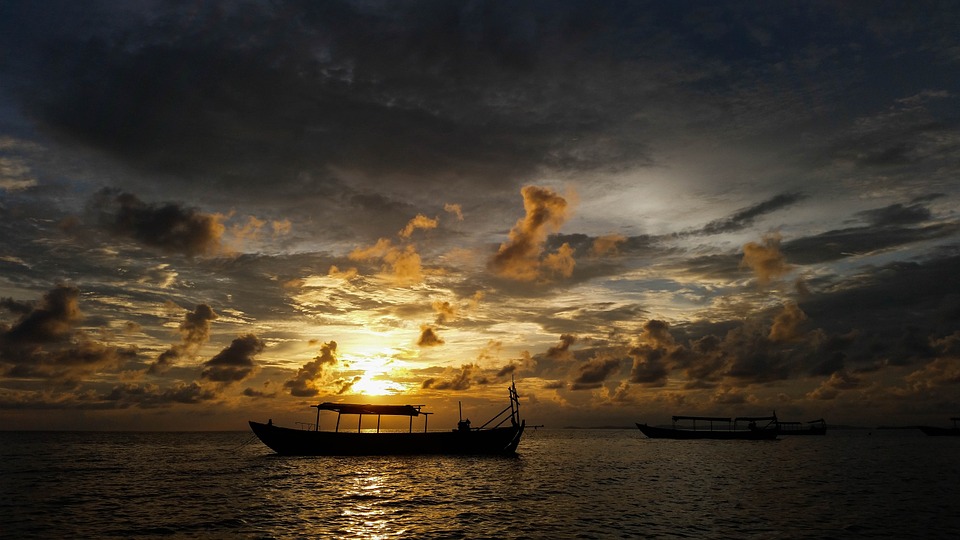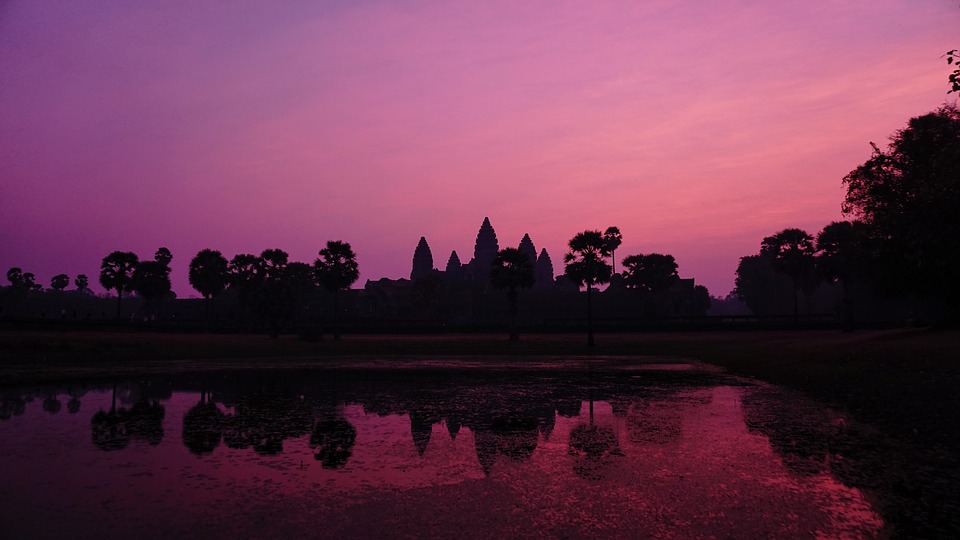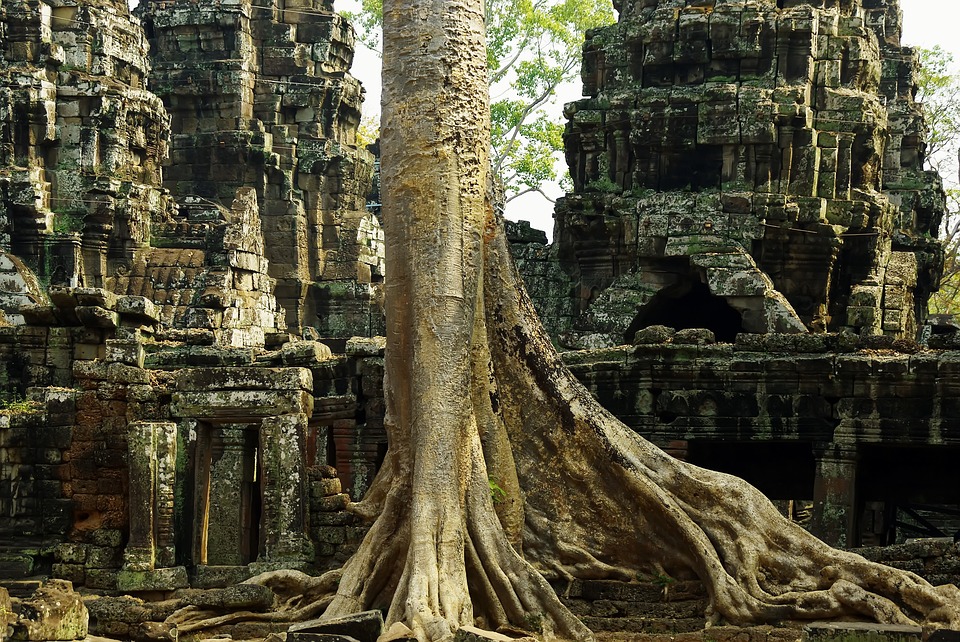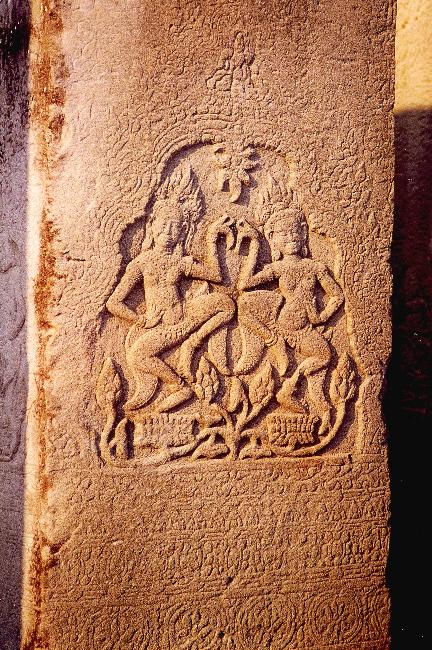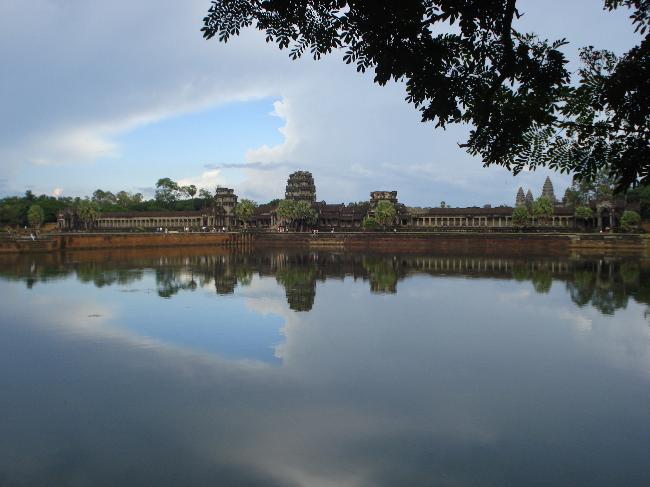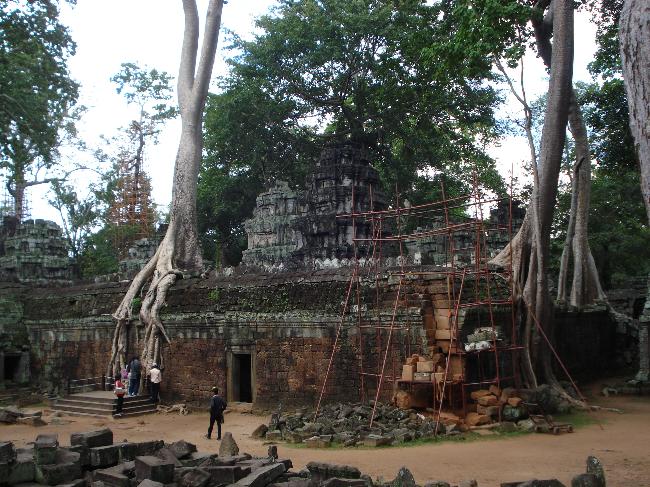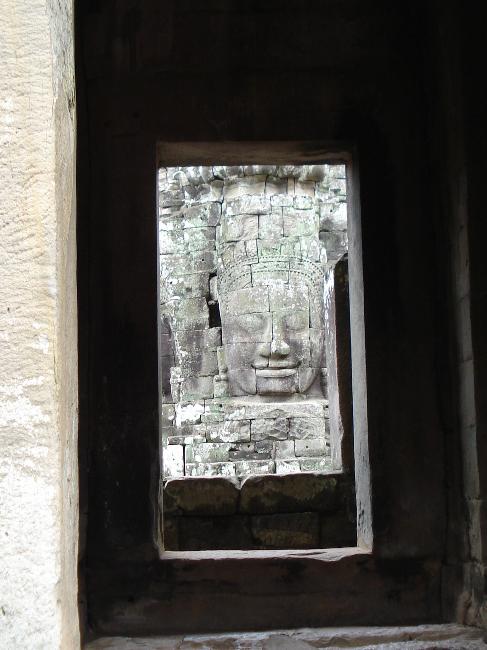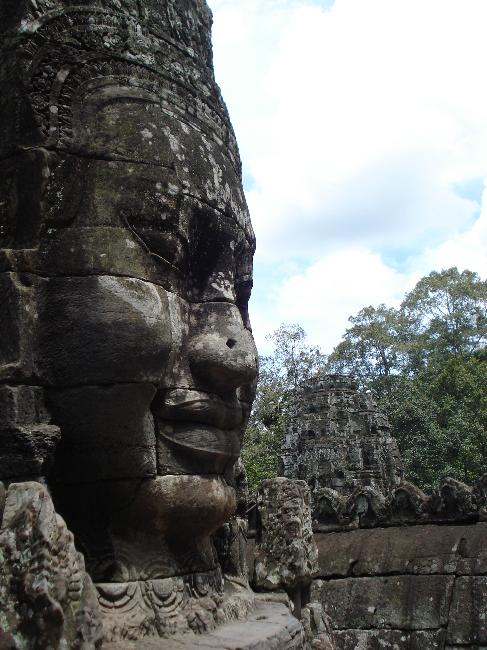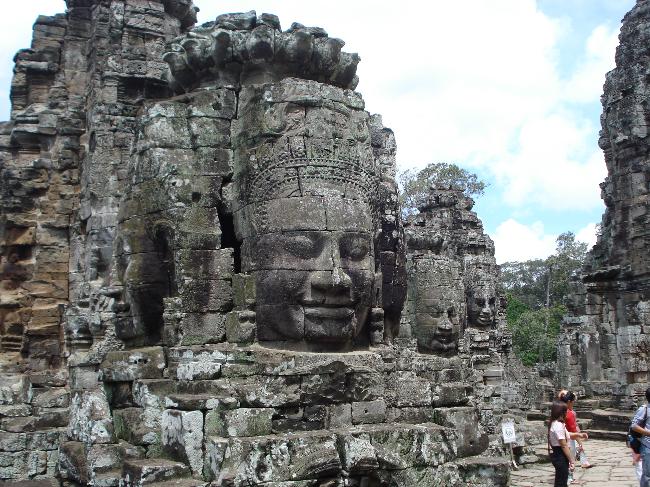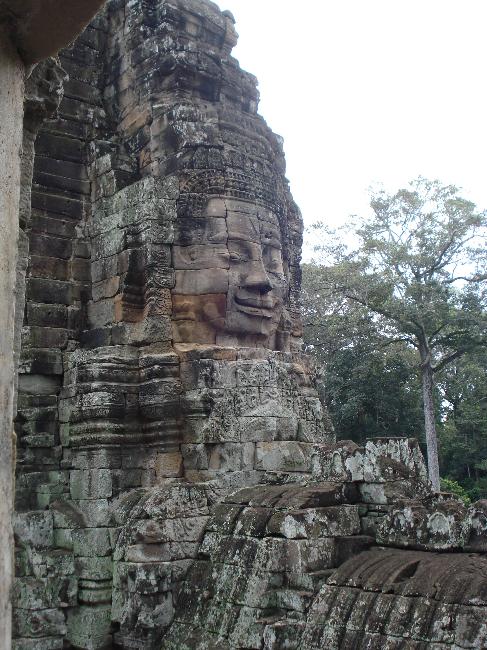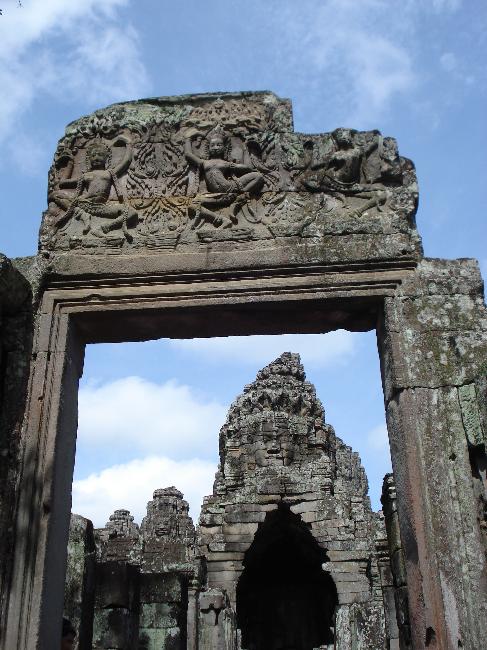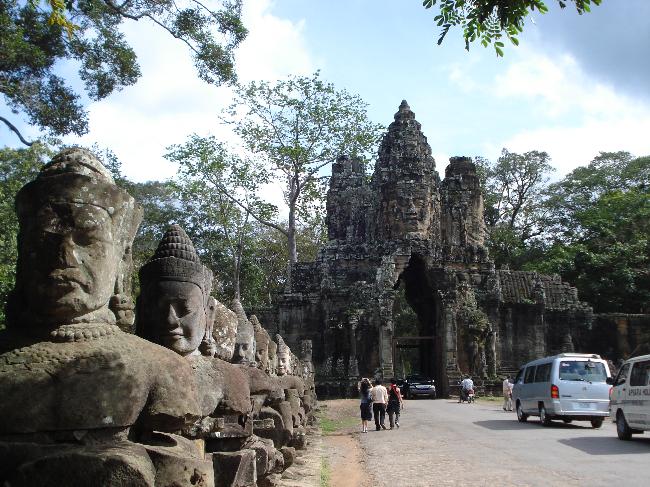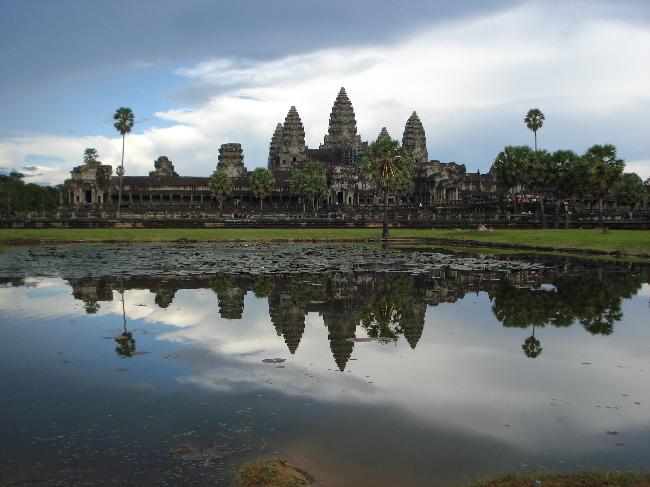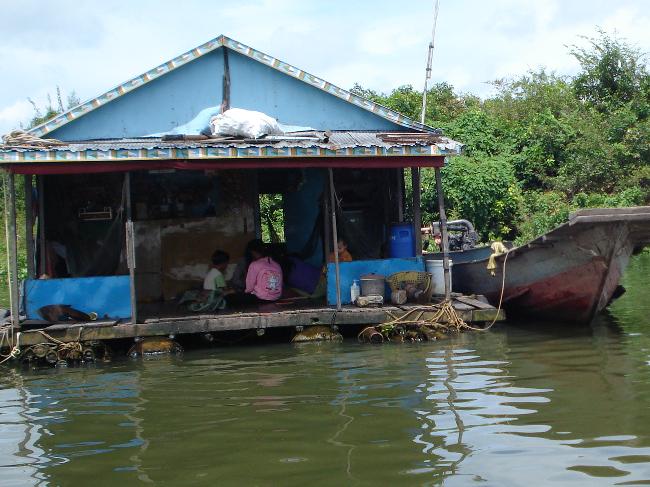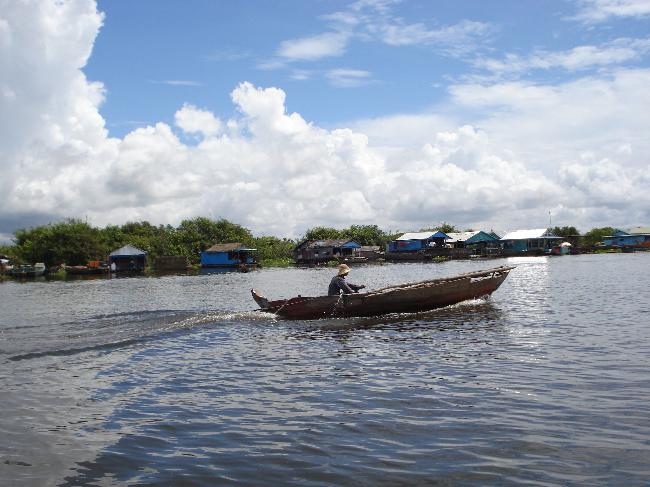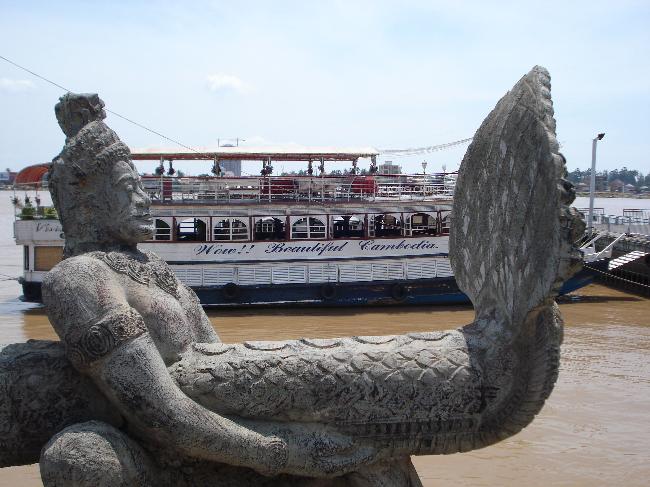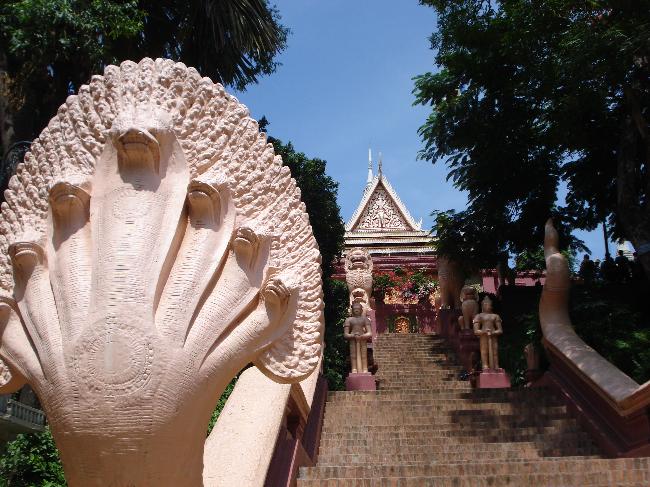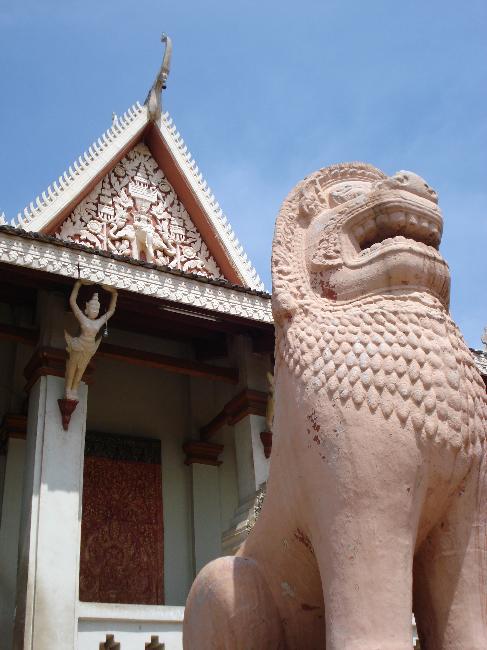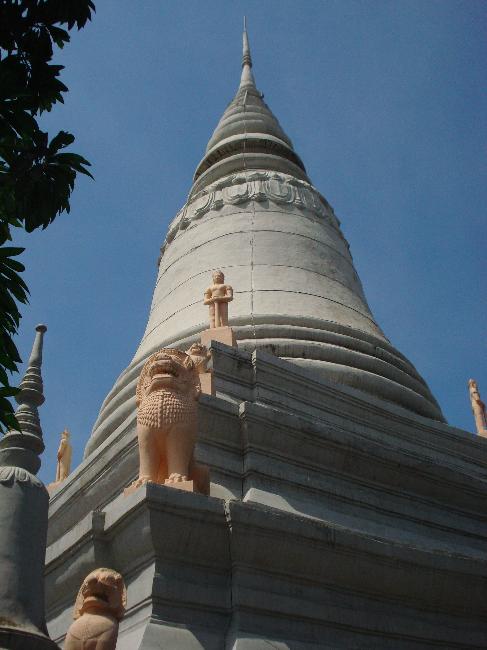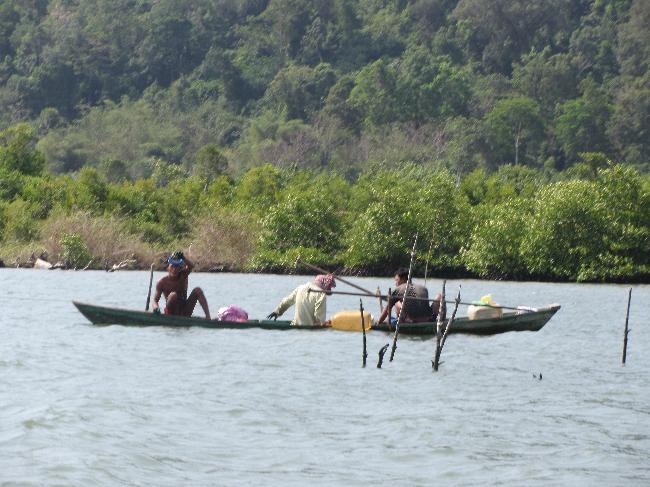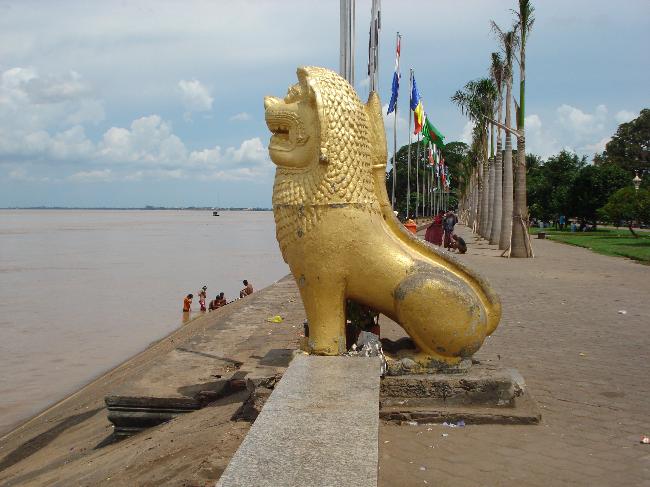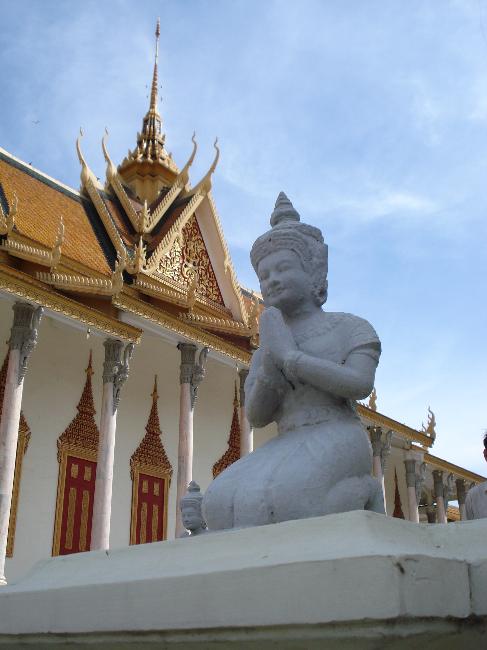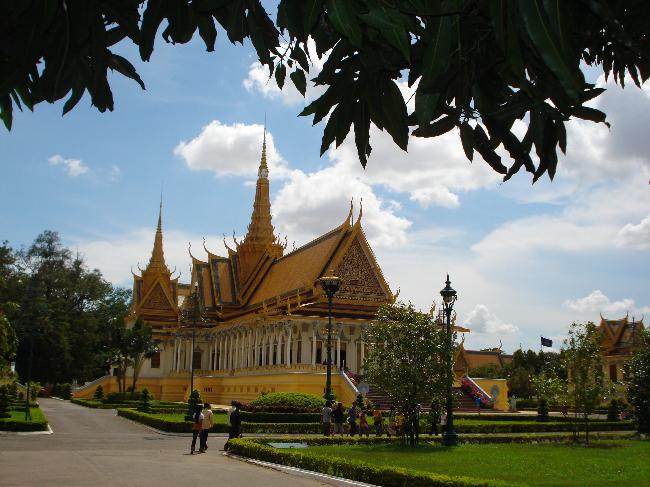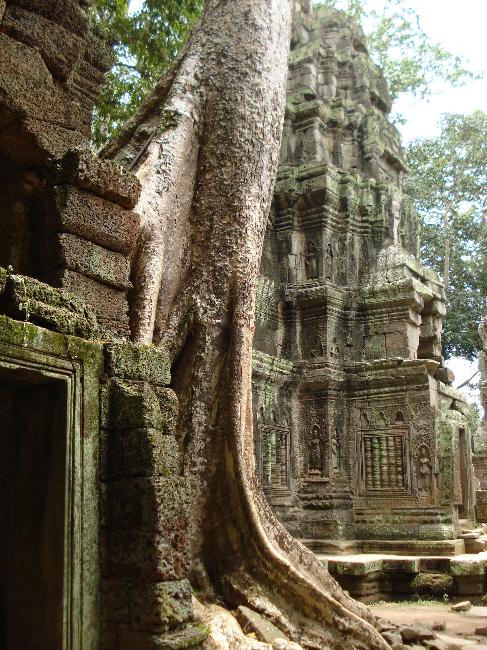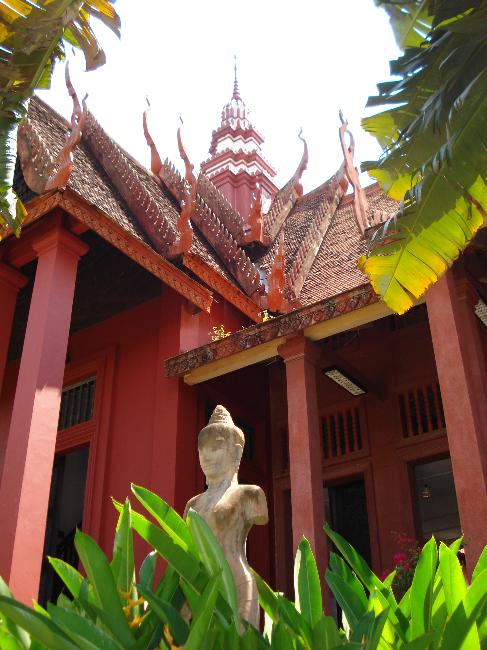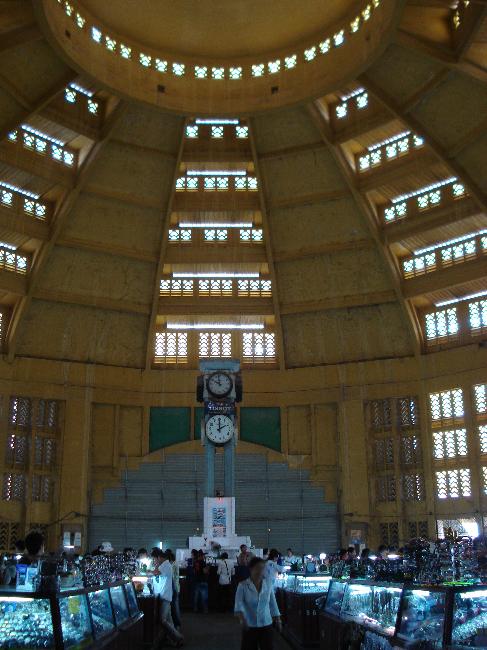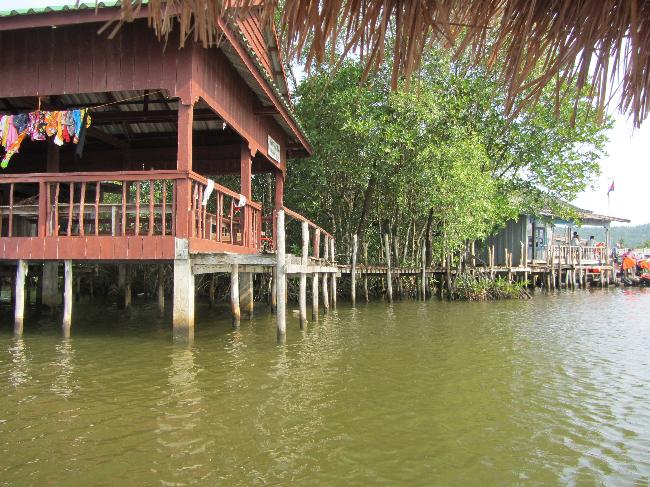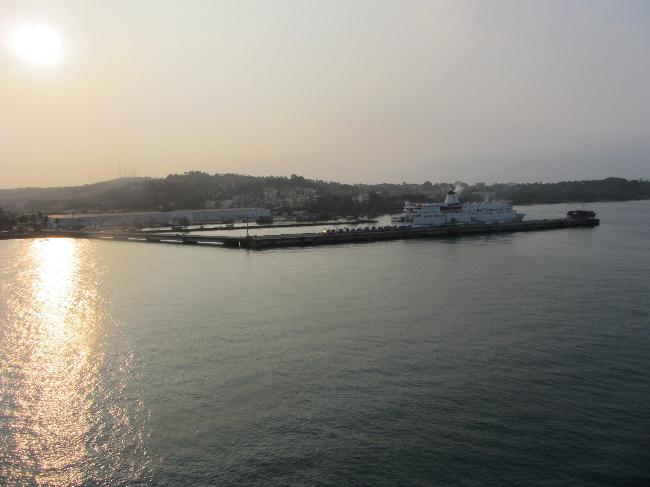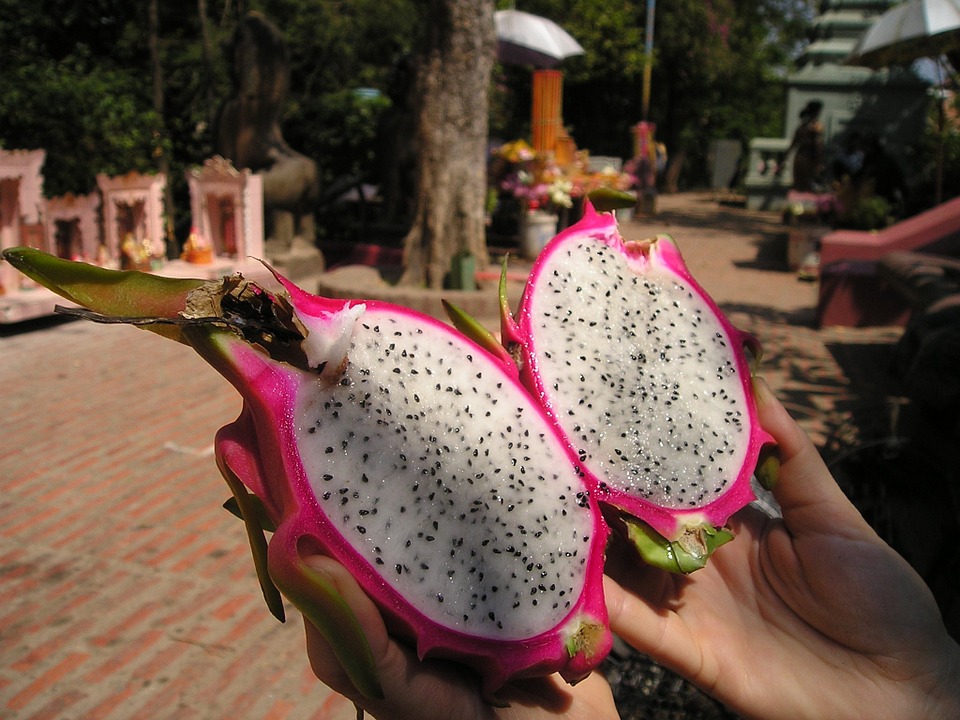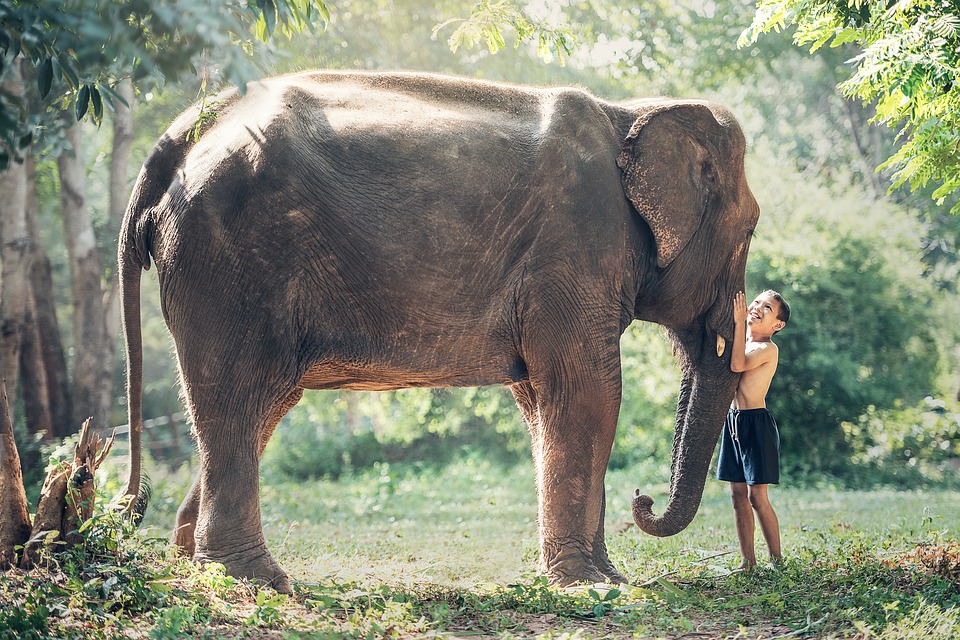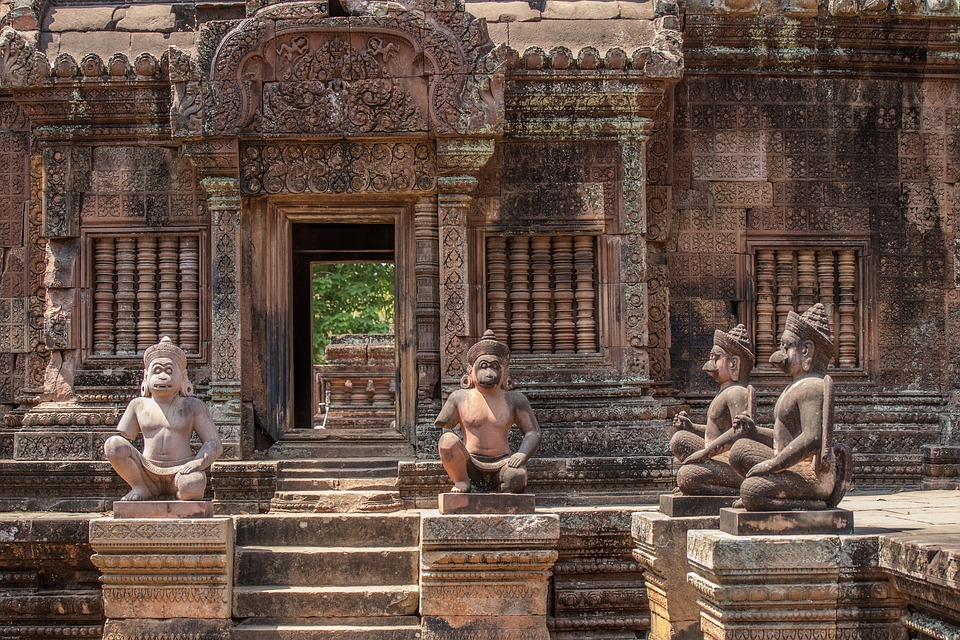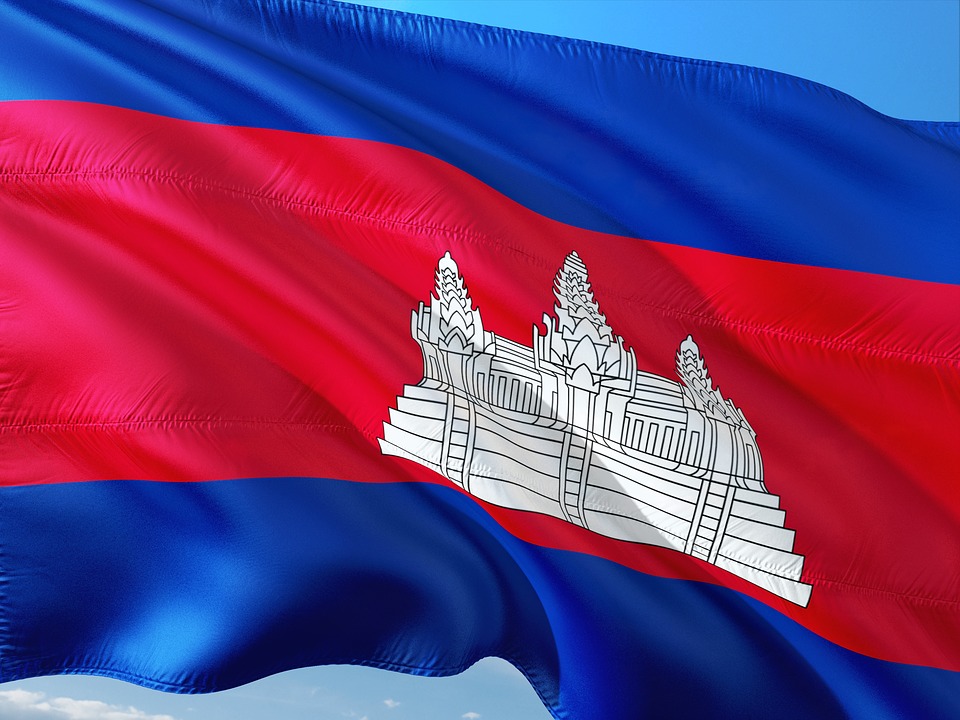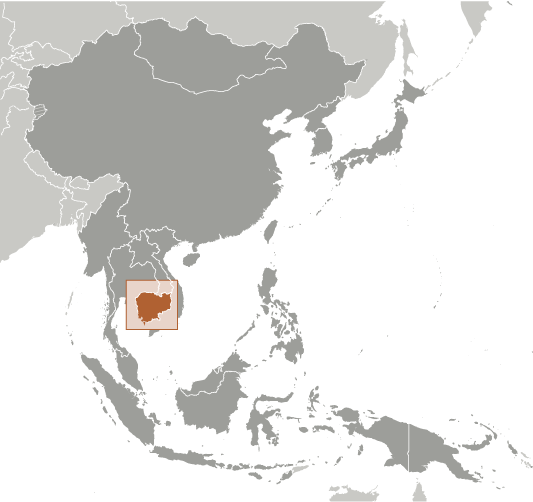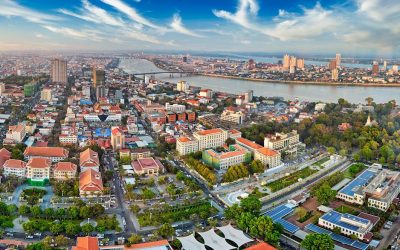Cambodia
(Preahreacheanachakr Kampuchea (Kingdom of Cambodia))

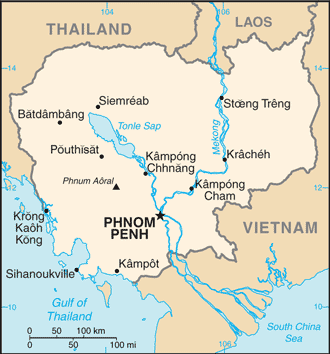
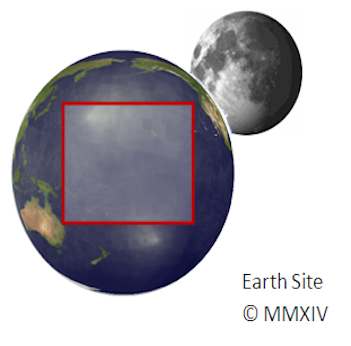
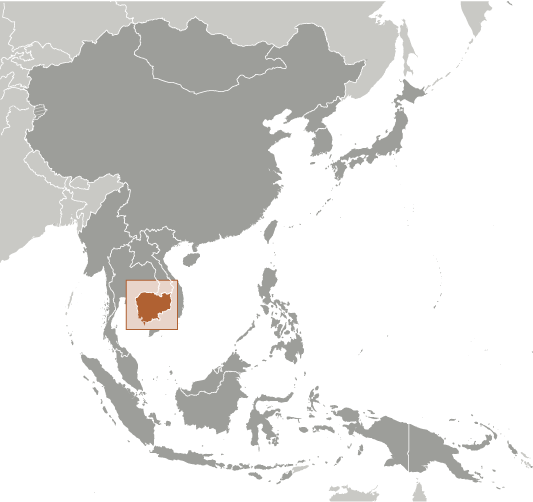
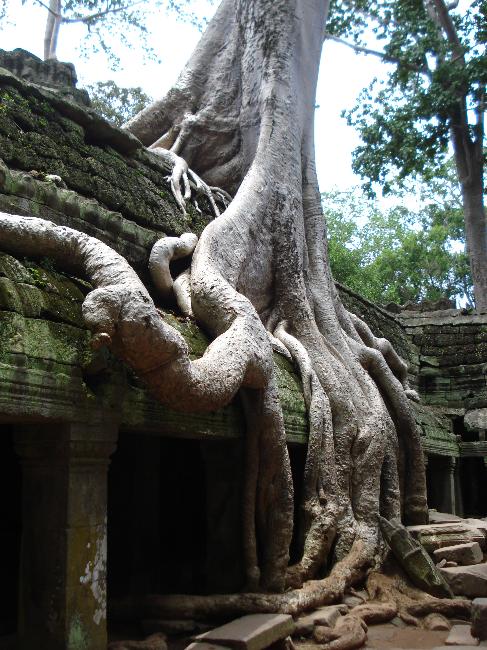
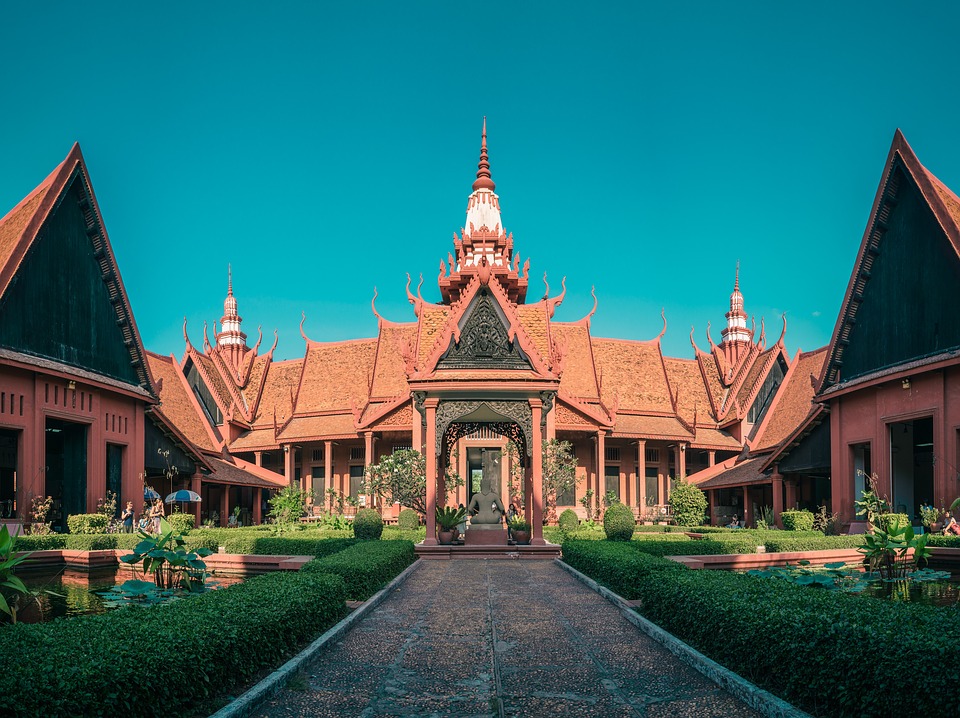
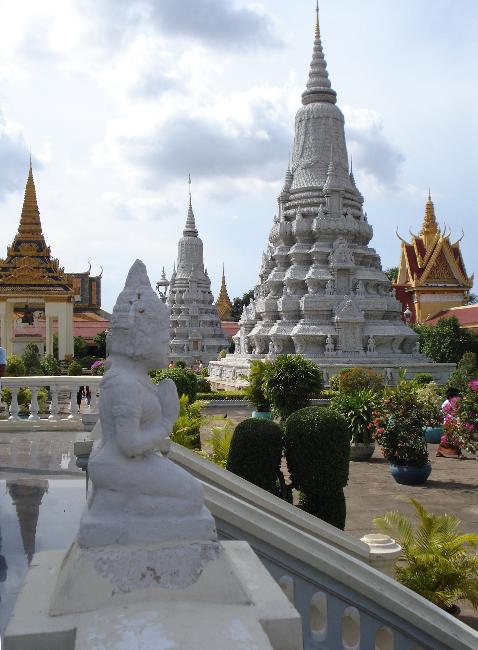
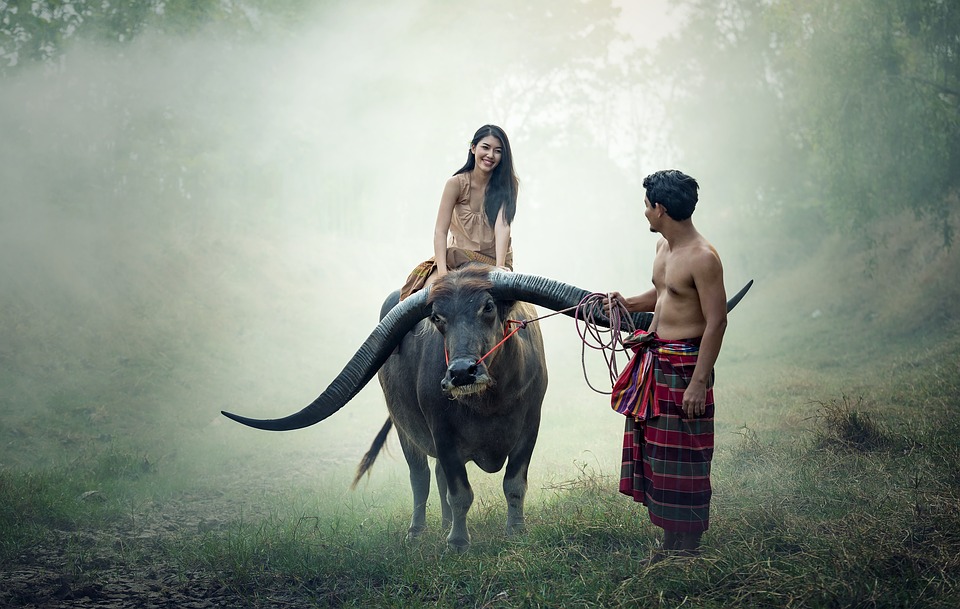
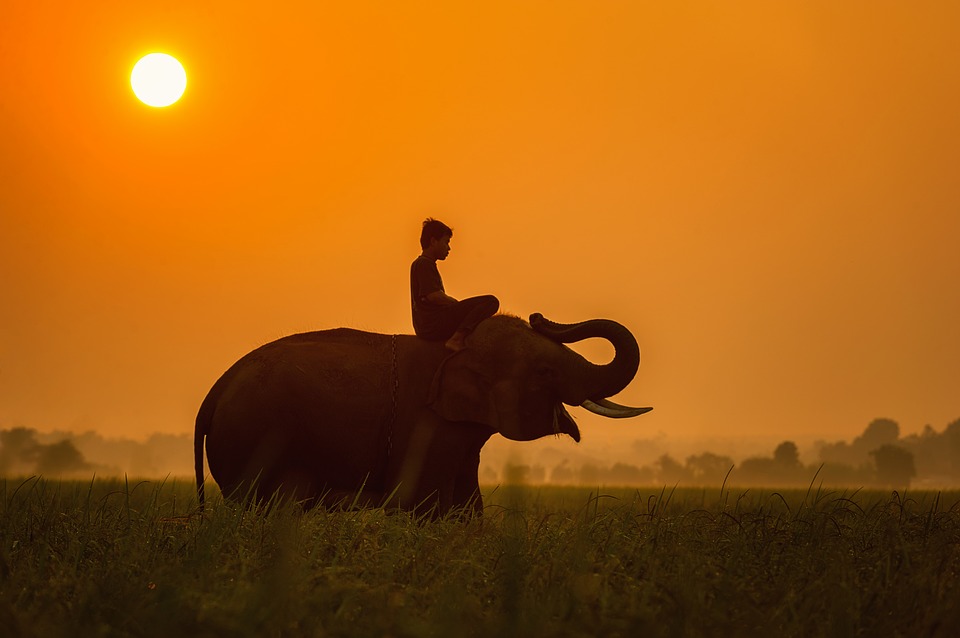
Capital: Phnom Penh
Population (Estimated July 2012): 14,952,665
Area: 181,035 km2 or 69,898 mi2
Currency: Riel (KHR)
Official Language: Khmer
Political Information: Parliamentary Democracy and Constitutional Monarchy
Official Religion: Buddhism
(approximately 96.4% of the population are Buddhist, 2.1% are Muslim, 1.3% have other religious beliefs and 0.2% have unspecified religious beliefs)
Highest Mountain: Phnum Aoral at 1,810m or 5,938ft
GDP Official Exchange Rate (OER is more precise at gauging a countries economic power)
(Estimated 2011): $13.2 billion (US$) or (GBP)
GDP (OER) Per Capita (per member of the population estimated 2011): (US$) or (GBP)
GDP Purchasing Power Parity (PPP is good for gauging living conditions and use of resources but not as accurate as OER. This data has been calculated based on the sum value of all goods and services produced in the country valued at prices prevailing in the United States)
(Estimated 2011): $32.95 billion (US$) or (GBP)
GDP (PPP) Per Capita (per member of the population estimated 2011): $2,300 (US$) or (GBP)
Time Zone (GMT/UTC): +7:00
Counties/Provinces/States: 23 Provinces (khett, singular and plural) and 1 municipality (krong, singular and plural)
Provinces: Banteay Mean Choay, Batdambang, Kampong Cham, Kampong Chhnang, Kampong Spoe, Kampong Thum, Kampot, Kandal, Kaoh Kong, Keb, Krachen, Mondol Kiri, Otdar Mean Choay, Pailin, Pouthisat, Preah Seihanu (Sihanoukville), Preah Vihear, Prey Veng, Rotanokiri, Siem Reab, Stoeng Treng, Svay Rieng, Takev
Municipalities: Phnum Penh (Phnom Penh)
Leaders: King Norodom SIHAMONI (since 29 October 2004) and Prime Minister HUN SEN (since 14 January 1985); Permanent Deputy Prime Minister MEN SAM AN (since 25 September 2008); Deputy Prime Ministers SAR KHENG (since 3 February 1992), TEA BANH, Gen., HOR NAMHONG, NHEK BUNCHHAY (all since 16 July 2004), BIN CHHIN (since 5 September 2007), KEAT CHHON, YIM CHHAI LY (since 24 September 2008), KE KIMYAN (since 12 March 2009)
Sources: CIA World Fact Book, Encyclopaedia Britannica.
Cambodia
Located in Southeast Asia, Cambodia is a country with a rich cultural heritage and a fascinating history. It shares borders with Thailand, Laos, and Vietnam, and is known for its stunning landscapes, ancient temples, and vibrant traditions. Cambodia has a complex history, with influences from various empires and colonial powers shaping its culture and society. Despite facing challenges in the past, Cambodia has emerged as a resilient nation that takes pride in its cultural heritage.
The cultural heritage of Cambodia is of great importance to the country and its people. It serves as a reminder of the nation’s history and identity, and plays a significant role in shaping the country’s tourism industry. The ancient temples of Angkor Wat, for example, attract millions of visitors each year who come to marvel at the architectural wonders and learn about the rich history of the Khmer Empire. Cambodia’s cultural heritage also includes traditional arts and crafts, such as dance, music, and handicrafts, which are passed down through generations and celebrated as an integral part of Cambodian identity.
Geography and Climate of Cambodia: From the Mekong River to the Cardamom Mountains
Cambodia is characterized by diverse geography and topography. The country is largely flat, with the Mekong River running through its heart. The river is not only an important waterway for transportation and trade but also provides fertile soil for agriculture. The Tonle Sap Lake, located near the capital city of Phnom Penh, is another significant geographical feature of Cambodia. It is the largest freshwater lake in Southeast Asia and supports a rich ecosystem.
In addition to its rivers and lakes, Cambodia is also home to mountain ranges such as the Cardamom Mountains in the southwest and the Dangrek Mountains in the north. These mountains provide a habitat for diverse flora and fauna, including endangered species such as tigers and elephants. The country’s geography and topography contribute to its unique climate, which is characterized by a tropical monsoon season from May to October and a dry season from November to April.
Cambodian People and Society: Diversity, Language, and Religion
Cambodia is a diverse country with a population of over 16 million people. The majority of the population is of Khmer ethnicity, but there are also significant minority groups such as the Cham, Chinese, and Vietnamese. This diversity is reflected in the country’s culture, traditions, and cuisine.
The official language of Cambodia is Khmer, which is spoken by the majority of the population. Khmer is a Mon-Khmer language and has its own unique script. While English is not widely spoken in Cambodia, it is becoming increasingly popular, especially among the younger generation.
Religion plays a significant role in Cambodian society, with Buddhism being the dominant religion. The majority of Cambodians are Theravada Buddhists, and temples can be found throughout the country. These temples serve as places of worship, as well as centers for community gatherings and cultural events.
Cambodian Cuisine: Exploring the Flavours of Khmer Food
Khmer cuisine is known for its bold flavors and use of fresh ingredients. It draws influences from neighboring countries such as Thailand and Vietnam but has its own unique twist. Rice is a staple in Cambodian cuisine and is often served with various meats, vegetables, and sauces.
One popular Khmer dish is amok, which is a steamed curry made with fish or chicken, coconut milk, and spices. Another famous dish is lok lak, which consists of stir-fried beef served with rice or noodles. Cambodian cuisine also includes a variety of soups, salads, and desserts.
In addition to its savory dishes, Cambodia is also known for its street food culture. Street vendors can be found throughout the country, selling snacks such as fried noodles, grilled meats, and fresh fruit shakes. Exploring the flavors of Khmer food is a must for any visitor to Cambodia.
Famous Landmarks and Tourist Attractions in Cambodia: Angkor Wat, Phnom Penh, and More
Cambodia is home to several famous landmarks and tourist attractions that draw visitors from around the world. The most iconic of these is Angkor Wat, a massive temple complex located in Siem Reap. Built in the 12th century, Angkor Wat is the largest religious monument in the world and is a UNESCO World Heritage site. Its intricate carvings and stunning architecture make it a must-visit destination for history and culture enthusiasts.
Another popular tourist destination in Cambodia is the capital city of Phnom Penh. Here, visitors can explore the Royal Palace, which serves as the residence of the King of Cambodia. The palace complex includes several buildings, including the Silver Pagoda, which houses many national treasures.
Other notable landmarks in Cambodia include the ancient city of Koh Ker, the beach town of Sihanoukville, and the floating villages on Tonle Sap Lake. Each of these destinations offers a unique glimpse into Cambodia’s history, culture, and natural beauty.
Cambodian Arts and Crafts: Traditional Dance, Music, and Handicrafts
Cambodia has a rich tradition of arts and crafts that are deeply rooted in its cultural heritage. Traditional dance and music are an integral part of Cambodian culture and are often performed during religious ceremonies and festivals. The most famous form of traditional dance is the Apsara dance, which is characterized by graceful movements and intricate costumes.
In addition to dance, traditional music plays an important role in Cambodian culture. The pinpeat orchestra, for example, consists of traditional instruments such as xylophones, drums, and gongs. These instruments are used to accompany dance performances and other cultural events.
Cambodia is also known for its handicrafts, which include silk weaving, pottery, and wood carving. Silk weaving is a traditional craft that has been passed down through generations. The intricate patterns and vibrant colors of Cambodian silk are highly prized and can be found in clothing, scarves, and home decor items.
Cambodia’s Troubled Past: The Legacy of the Khmer Rouge Regime
Cambodia’s recent history is marked by the dark period of the Khmer Rouge regime, which lasted from 1975 to 1979. Under the leadership of Pol Pot, the Khmer Rouge implemented radical policies that resulted in the deaths of an estimated 1.7 million people, through execution, forced labor, and starvation.
The legacy of the Khmer Rouge regime continues to impact Cambodia today. Many Cambodians still bear the scars of this traumatic period, with survivors and their families seeking justice and healing. Efforts have been made to document the atrocities committed during this time, with the establishment of the Extraordinary Chambers in the Courts of Cambodia (ECCC) to prosecute those responsible for crimes against humanity.
Despite the challenges faced by Cambodia in its recent history, the country has shown remarkable resilience and determination to move forward. Efforts have been made to rebuild and develop the country, with a focus on education, infrastructure, and economic growth. Cambodia’s troubled past serves as a reminder of the importance of peace, justice, and human rights.
Current Political and Economic Situation in Cambodia: Challenges and Opportunities
Cambodia’s current political situation is characterized by a one-party system, with the ruling Cambodian People’s Party (CPP) holding a majority in parliament. While there have been concerns about political freedoms and human rights in recent years, Cambodia has made progress in terms of economic development.
The country has experienced steady economic growth over the past decade, with tourism, garment manufacturing, and agriculture being key sectors. However, Cambodia still faces challenges such as corruption, income inequality, and a lack of infrastructure. Efforts are being made to address these issues and promote sustainable and inclusive development.
Cambodia’s strategic location in Southeast Asia also presents opportunities for economic growth and regional cooperation. The country is part of the Association of Southeast Asian Nations (ASEAN) and has signed various free trade agreements with neighbouring countries. These agreements aim to promote trade and investment, as well as enhance regional integration.
Environmental Issues in Cambodia: Deforestation, Wildlife Conservation, and Climate Change
Cambodia faces several environmental issues that threaten its natural resources and biodiversity. Deforestation is a major concern, with illegal logging and land encroachment leading to the loss of forests and wildlife habitats. This has a significant impact on the country’s ecosystems and contributes to climate change.
Wildlife conservation is another important issue in Cambodia. The country is home to several endangered species, including tigers, elephants, and freshwater dolphins. Efforts are being made to protect these species through the establishment of protected areas and conservation projects.
Climate change is also a growing concern in Cambodia, with rising temperatures and changing weather patterns affecting agriculture and water resources. The government has recognized the importance of addressing climate change and has implemented initiatives to promote renewable energy, reduce greenhouse gas emissions, and build climate resilience.
Future Prospects for Cambodia: Building a Sustainable and Inclusive Society
Despite the challenges it faces, Cambodia has a promising future ahead. The country has made significant progress in terms of economic development and poverty reduction, with improvements in education, healthcare, and infrastructure. Efforts are also being made to promote sustainable tourism and protect the environment.
Building a sustainable and inclusive society is a key priority for Cambodia’s future. This includes promoting social justice, human rights, and gender equality. It also involves investing in education and skills development to empower the younger generation and ensure they have the tools they need to succeed.
Cambodia’s rich cultural heritage and natural beauty provide a strong foundation for sustainable development. By preserving its cultural traditions, protecting its natural resources, and promoting responsible tourism, Cambodia can continue to thrive and build a brighter future for its people.
FAQs
What is Cambodia?
Cambodia is a country located in Southeast Asia. It shares borders with Thailand, Laos, and Vietnam.
What is the capital city of Cambodia?
The capital city of Cambodia is Phnom Penh.
What is the population of Cambodia?
As of 2021, the estimated population of Cambodia is around 16.7 million people.
What is the official language of Cambodia?
The official language of Cambodia is Khmer.
What is the currency of Cambodia?
The currency of Cambodia is the Cambodian riel, although the US dollar is also widely used.
What is the climate like in Cambodia?
Cambodia has a tropical climate with two distinct seasons: the rainy season from May to October and the dry season from November to April.
What are some popular tourist attractions in Cambodia?
Some popular tourist attractions in Cambodia include the Angkor Wat temple complex, the Royal Palace in Phnom Penh, and the beaches of Sihanoukville.
What is the main religion in Cambodia?
The main religion in Cambodia is Buddhism, with around 95% of the population practicing this religion.
What is the government system in Cambodia?
Cambodia is a constitutional monarchy with a parliamentary system of government. The current king is Norodom Sihamoni.
Political Boundaries of Cambodia: Provinces, Districts, or Historical Boundaries.
Cambodia, officially known as the Kingdom of Cambodia, is a Southeast Asian country located in the southern part of the Indochinese Peninsula. It shares its borders with Thailand to the west, Laos to the north, and Vietnam to the east and southeast. Understanding...
Climate Zones of Cambodia: Different climate regions Of Cambodia
Cambodia is a country located in Southeast Asia, bordered by Thailand, Laos, and Vietnam. It has a diverse geography, with mountains, plateaus, and coastal areas. The climate in Cambodia is influenced by the monsoon season, which brings heavy rainfall and distinct wet...
Terrain and Topography of Cambodia: mountains, valleys, and plains.
Cambodia, located in Southeast Asia, is a country known for its rich history, vibrant culture, and stunning landscapes. Understanding the terrain and topography of Cambodia is crucial for various reasons. It helps in understanding the country’s biodiversity,...
History of Cambodia
Introduction Cambodia is a country with a rich and vibrant history that dates back thousands of years. From the early civilizations of Funan and Chenla to the rise and fall of the Angkor Empire, Cambodia has played a significant role in shaping Southeast Asian culture...
Population Density of Cambodia
Cambodia, located in Southeast Asia, is a country with a population density that has been steadily increasing over the years. With an estimated population of over 16 million people, Cambodia has a population density of approximately 92 people per square kilometer....
Natural Resources of Cambodia: Where Natural Resources are located In Cambodia
Cambodia, located in Southeast Asia, is a country known for its rich natural resources. With a diverse geography that includes mountains, forests, rivers, and coastlines, Cambodia is home to a wide range of natural resources that play a crucial role in the...
Cultural or Historical Sites of Cambodia: Important Cultural Landmarks or Historical Sites In Cambodia
Cambodia is a country with a rich cultural and historical heritage that dates back thousands of years. From the magnificent temples of Angkor Wat to the tragic history of the Khmer Rouge regime, Cambodia’s past is both fascinating and heartbreaking. It is...
Discovering the Hidden Gems of Cambodia: A British Traveller’s Insightful Journey
Cambodia, a country located in Southeast Asia, is a land of rich history, vibrant culture, and breathtaking landscapes. From its ancient temples to its bustling cities, Cambodia offers a unique and unforgettable travel experience. In recent years, Cambodia has become...
